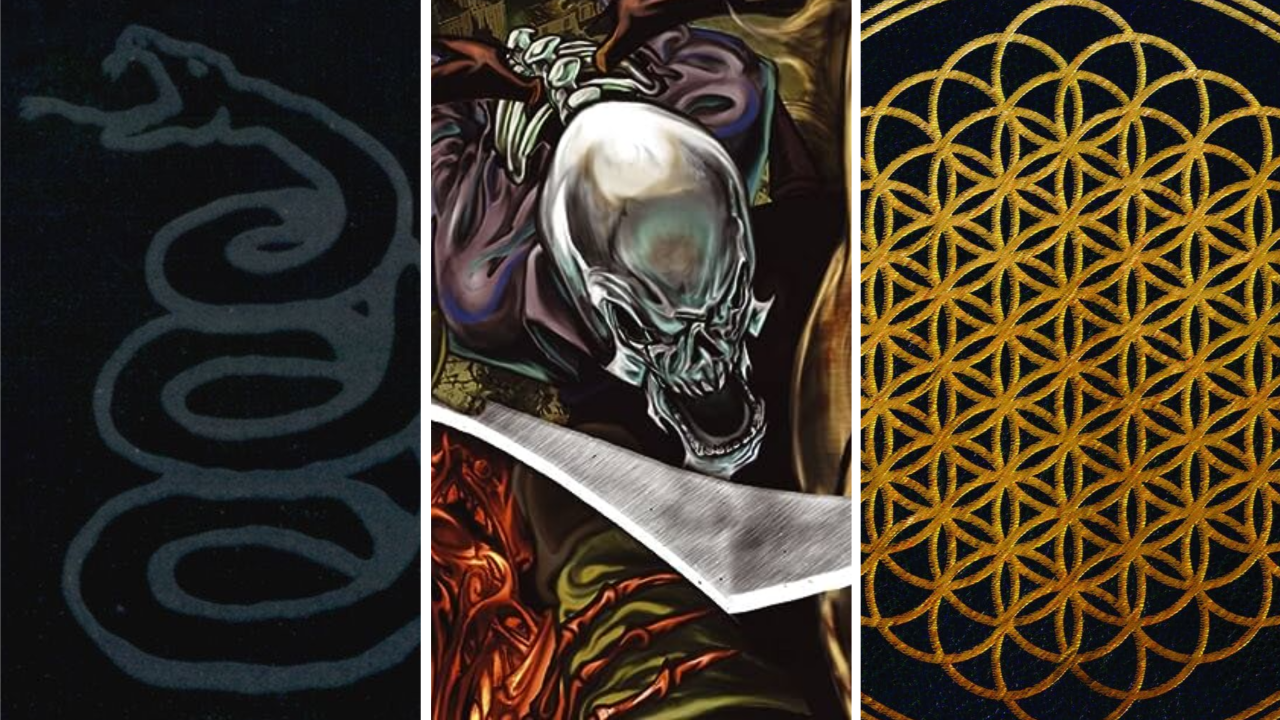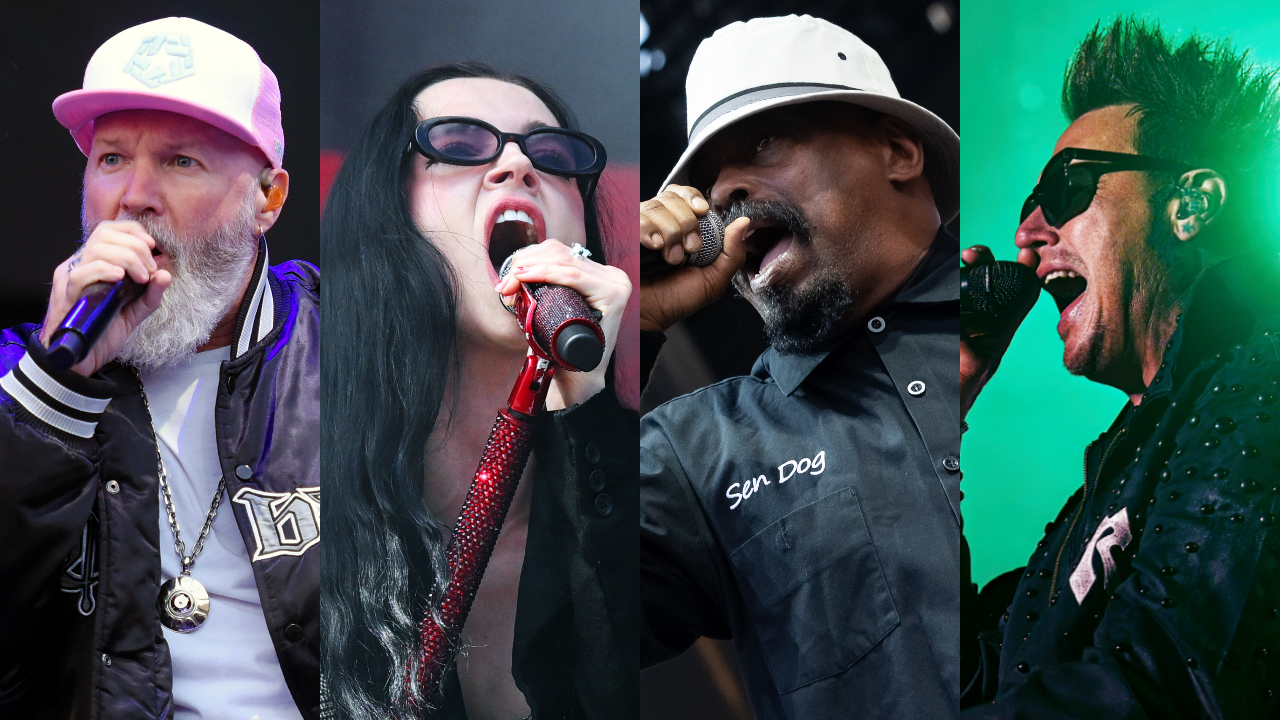10 metal bands who completely changed and immediately made a masterpiece
Bands need to evolve to survive, and these classic albums by Metallica, Avenged Sevenfold and Sepultura are masterclasses in switching everything up

We should always applaud a musician for making a bold creative leap with their sound. If you’re a thrash band and you come back with a dubstep heavy reggaeton album, then good for you, that’s a brave choice! Although it’s an intrepid move to make, switching your style doesn’t strictly mean that the ensuing album will be any good – it often takes a few goes before artists really perfect it. Here, we salute the 10 bands that took a drastic stylistic detour, nailed it first time and created an instant classic.

Metallica – Metallica (1991)
Of course we were going to include the big dog. Metallica is the album that pretty much every metal band has been chasing since it came out. These days, “making our Black Album” is shorthand for going from your harsher, more technical and challenging music to a bigger, simpler, stadium-sized sound. The fact that, over 30 years later, there is still only one album and one band who have ever nailed it says it all.
Avenged Sevenfold – City Of Evil (2005)
Avenged Sevenfold were frustrated leaders of the 2000s metalcore scene. They obviously felt they had pushed that style as far as they could with 2003’s Waking The Fallen, because when they returned with City Of Evil two years later, all traces of the genre had vanished. Replaced with a Guns-n’-’Tallica hard rock sound, the album won Avenged an MTV award, turned them into stars and features some of their finest and most anthemic songs.
Bring Me The Horizon – Sempiternal (2013)
Bring Me had already gone from a pretty bad deathcore band to a decent metalcore band. However, it took the introduction of synth man Jordan Fish and the influence of mainstream nu metal artists like Linkin Park for the band to truly find their calling. Sempiternal shocked even the most cynical critics of the band with how sleek and forward-thinking it sounded, sowing the seed for them to become the festival headliners they now are.
Judas Priest – Sad Wings Of Destiny (1976)
Judas Priest may have debuted on Rocka Rolla, but it was Sad Wings Of Destiny that truly started the band’s ascent to Metal Godhood. This album saw Rob Halford and co. ditch bluesy rock and charge straight-ahead with a heavy metal attack, led by the guitar pageantry of Victim Of Changes. From there, The Ripper and Tyrant ensure that this is an album populated with more than a fair share of all-time Priest classics.
The Cult – Electric (1987)
Despite them being a prominent post-punk/goth rock band during the early ’80s, The Cult’s decision to employ super producer Rick Rubin and aim for more radio-friendly hard rock proved a masterstroke on Electric. It became their first millions-seller in the US and gave The Cult a set of anthems – such as Love Removal Machine, Lil’ Devil and Wild Flower – that were perfect for the type of massive venues they ended up playing after its release.
Sepultura – Chaos A.D. (1993)
Sepultura’s first four albums were an ever-evolving death and thrash mash-up: two of them, 1989’s Beneath The Remains and 1991’s Arise, are rightly regarded as classics. But when the Brazilians decided to fatten up their sound and embrace their groovier tendencies, they made their definitive statement. Chaos A.D. turned them from promising and well-regarded underdogs into one of the giants of ’90s metal. Refuse/Resist and Territory remain two of the genre’s defining songs.
Sign up below to get the latest from Metal Hammer, plus exclusive special offers, direct to your inbox!
Meshuggah – Destroy Erase Improve (1995)
We now know Meshuggah as Swedish tech-metal destroyers and one of the most unique and influential bands in the history of metal. However, in their early days they were just another groove-laden, Metallica-aping bunch: 1991 debut album Contradictions Collapse was good, but hardly essential. It took four years and a change of sound for the real Meshuggah to reveal themselves with the landmark, remarkable Destroy Erase Improve. They’ve never looked back since – nor has anyone wanted them to.
Corrosion Of Conformity – Deliverance (1994)
The addition of guitarist Pepper Keenan and singer Karl Agell pushed Corrosion Of Conformity from the crossover thrash of their roots to a sludgier metal attack. However, the arguably even greater – and more career-launching – change was when Keenan also stepped behind the mic to replace Agell, with Deliverance pushing into a riffy stoner haze. Single Albatross was COC’s first song to chart, and the band have stuck to its bluesy ways ever since.
Carcass – Heartwork (1993)
Children of the fertile midlands grindcore scene that also birthed Napalm Death, Carcass started as unrepentant aggressors with a penchant for medical terminology, beloved by Radio 1 DJ John Peel. They first strayed with 1991’s Necroticism, a more pure-hearted death metal beast. Then the band wanted to simplify things and add even more melody. The result, Heartwork, remains a landmark release in the melodeath genre and the finest moment of the band‘s career.
Ulver – The Assassination Of Julius Caesar (2017)
Ulver have always been a tough band to categorise, evolving from folky black metal to electronic chamber noise and beyond. However, as eclectic as they are, it was still a shock when they released the strutting synthpop of this, their 11th studio album. The Assassination Of Julius Caesar might have had more in common with The Human League than it did Bathory, but no one can argue with its moody, infectious magnificence.

Stephen joined the Louder team as a co-host of the Metal Hammer Podcast in late 2011, eventually becoming a regular contributor to the magazine. He has since written hundreds of articles for Metal Hammer, Classic Rock and Louder, specialising in punk, hardcore and 90s metal. He also presents the Trve. Cvlt. Pop! podcast with Gaz Jones and makes regular appearances on the Bangers And Most podcast.
